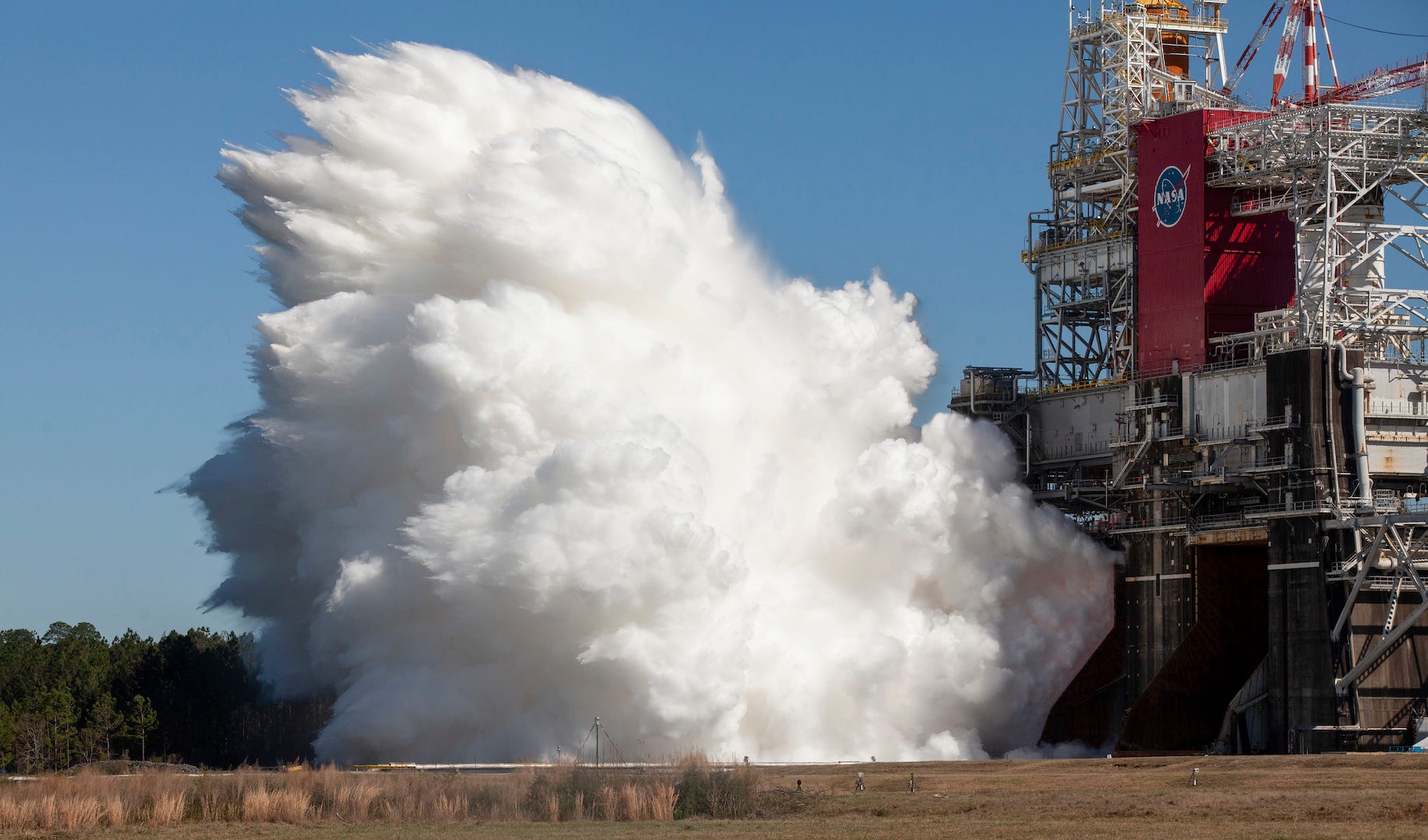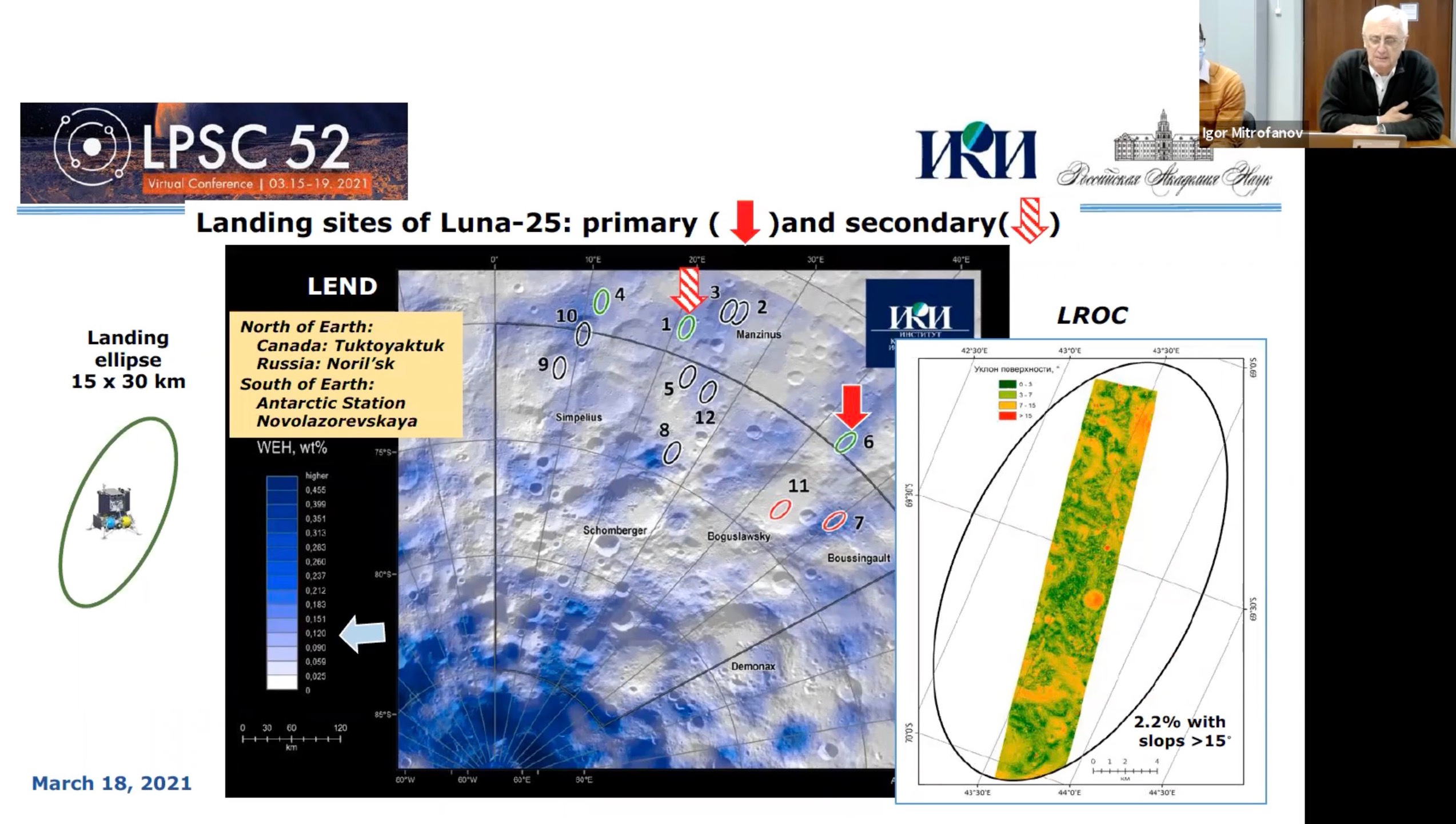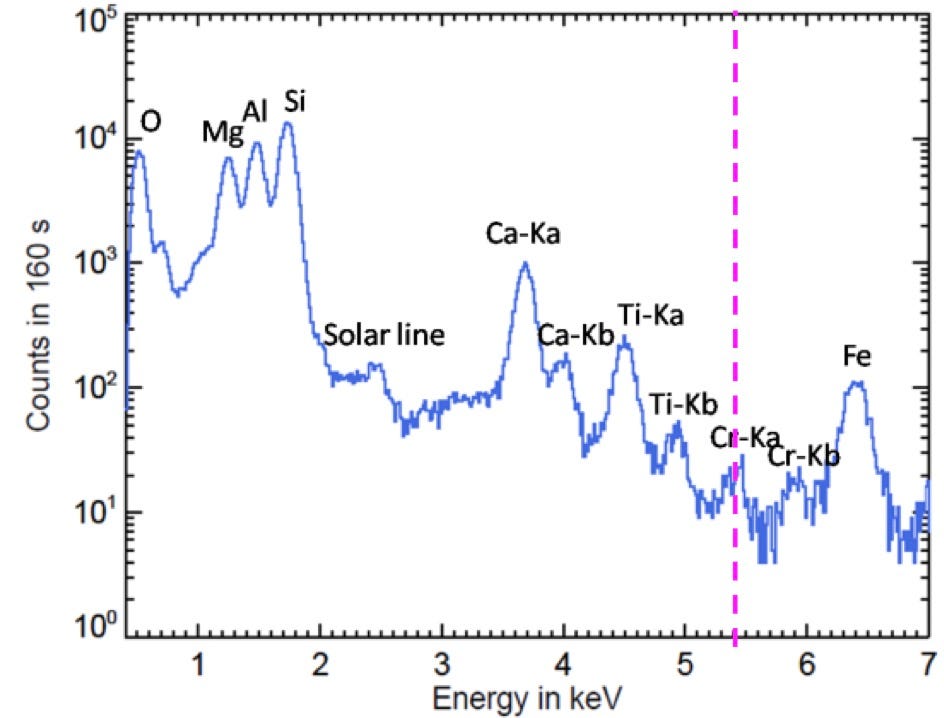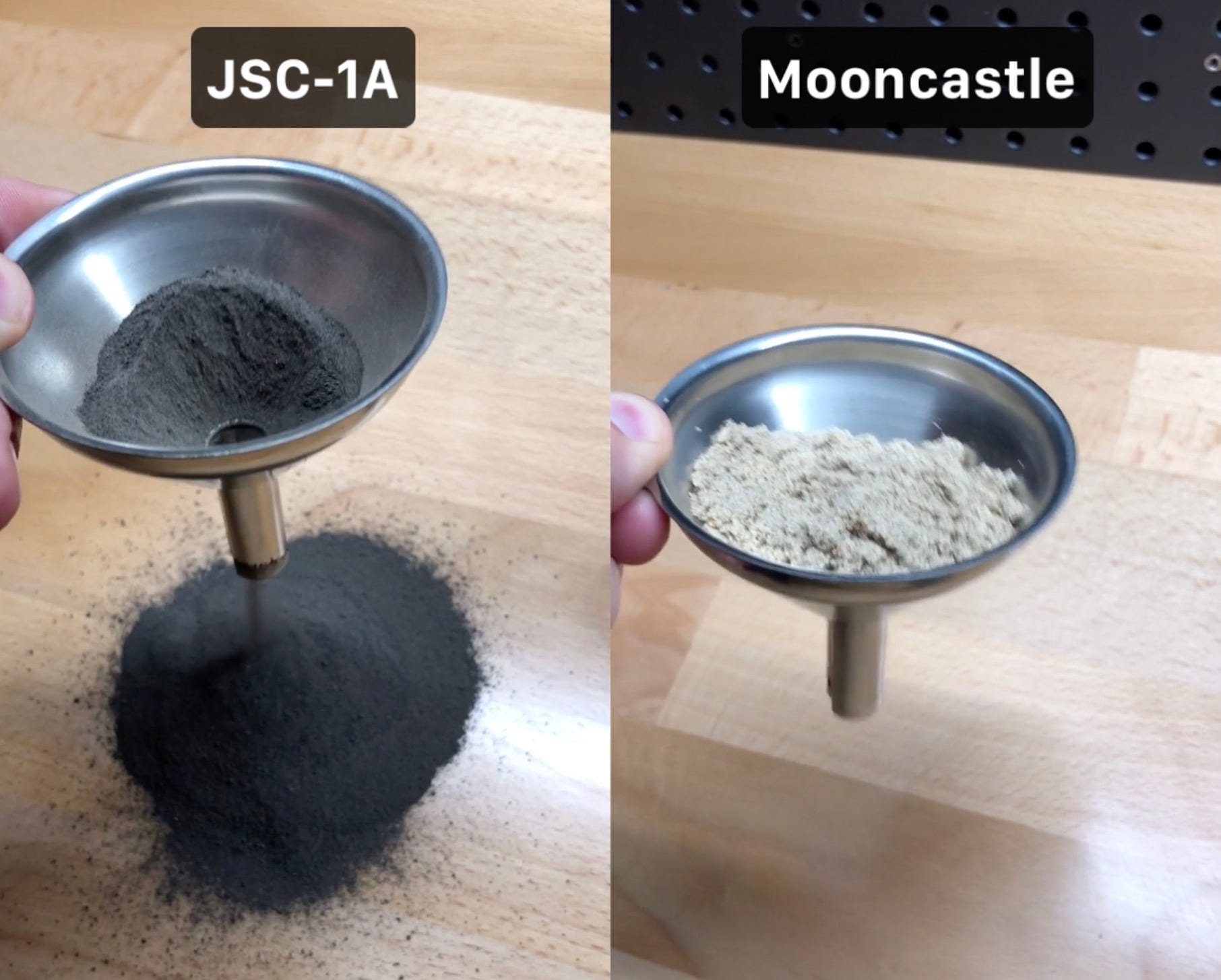Moon Monday Issue #19
NASA's SLS rocket roars, Russia's Luna-25 Moon lander launching this year, ESA to provide a lunar navigation service, India's Moon orbiter senses Chromium, and more developments in the lunar space.
Highlight
NASA’s SLS rocket successfully fired all four of its core stage engines on March 18, passing the last critical milestone of its Green Run tests and proving itself ready to power future crewed Moon flights for the agency’s Artemis program. The engines fired for 8 minutes and 19 seconds, switched between three power levels, and gimbaled, all to mirror the various flight scenarios in future launches.

The team is now assessing data from the test to identify and fix any issues post which they will refurbish the core stage and ship it to NASA’s Kennedy Space Center in Florida by end of April. There, the core stage will be assembled with the rest of the rocket and the Orion spacecraft to launch the uncrewed Artemis I mission. In an interview for SpaceNews, NASA’s Acting Administrator Steve Jurczyk acknowledged that the originally planned November launch may not be possible for Artemis I and that NASA will decide a new launch date in the coming weeks.
Meanwhile, NASA is studying ways to reduce the cost of the SLS rocket, which currently stands at over $2 billion per flight, not counting the developmental costs of more than $20 billion put in so far. According to Jurczyk, the agency will be have an interim report by August that proposes concepts and directions to reduce SLS’ cost. He added that NASA is not abandoning the use of the SLS rocket for robotic, non-lunar missions such as those to the outer planets.
Exploration
At the Lunar and Planetary Science Conference (2021), a scientist from the Space Research Institute in Moscow gave a talk on Russia’s Luna-25 robotic Moon lander launching in October 2021, kickstarting the nation’s lunar exploration program. Luna-25 will have 30 kilograms worth of scientific instruments, including an arm to sample material from 20 to 30 centimeters below the surface and feed it to a laser spectrometer to determine which elements and isotopes are present. There’s also a neutron and gamma ray spectrometer onboard to identify subsurface composition. The mission’s landing site, while not truly polar due to engineering constraints, is selected at about 70° South such that some subsurface water ice can still be detected and mapped. ESA is contributing a camera called Pilot-D to image the entire landing phase of the mission. The public abstract posted on the event’s website is rather brief.

Astrobotic has sent an analog model of its Griffin lander to NASA to test how a full-scale model of the agency’s VIPER Moon rover, set to launch in 2023, will integrate with the lander and drive down its ramps. Over the next few months, the Astrobotic and NASA teams will evaluate different ramp geometries and wheel engagement features to determine an optimal configuration.
ESA is launching the Lunar Pathfinder mission by the end of 2023, a lunar orbiter which will determine its position using GPS and Galileo satellites, a world first. To pick up the extremely weak Earth satellite navigation signals at the Moon, Pathfinder will have a highly sensitive receiving antennae. This will allow Pathfinder to autonomously know its position with an error margin of less than 100 meters––more accurate than traditional ground tracking––while also reducing the mission’s operational costs. For ESA, Pathfinder will pave the way for their Moonlight initiative that aims to establish a lunar communication and navigation service. Such a service could support a variety of landing and orbital missions, especially surface missions on the farside, and enable science at the Moon such as providing a common time reference for lunar-based fundamental physics and astronomy experiments. NASA also wants to extend the use of GPS to the Moon and will be testing a similar high sensitivity receiver on its CLPS provider Firefly’s first mission in 2023.
As NASA embarks on building a sustainable Moon base with its Artemis program, it asked the public for practical, cost-effective solutions to unload large payloads onto the lunar surface. Out of 224 entries, NASA awarded $25,000 in total to six teams. The winning ideas range from huge gantry systems capable of carrying up to 12 metric tons of payloads to fast-moving cargo transport rovers with cranes.
Science
The Planetary Science Journal has published a new focus issue highlighting new mission concepts to explore geologically diverse landing sites on the Moon and answer transformative science questions. Armed with 21st century tools, data and scientific understanding to thoroughly plan a mission to pretty much any site on the Moon, scientists have proposed mission concepts ranging from placing physical science instruments like modern seismometers across the Moon to penetrators providing subsurface information to low-cost sample return missions to specialized CubeSat orbiters.
ISRO’s Chandrayaan 2 orbiter has sensed Chromium on the Moon, a first such detection in X-rays. The discovery comes from the Chandrayaan-2 Large Area Soft X- ray Spectrometer (CLASS) instrument on the orbiter, which is globally mapping elements at the highest resolution till date, helping constrain the composition of the Moon’s crust and how it evolved.

A nice article on the efficient process ESA, the University of Glasgow and Metalysis are developing to extract nearly all oxygen present in lunar soil while also getting valuable metallic alloys as byproducts to use for manufacturing things on the Moon. Having such a process is crucial for lunar habitats to survive without constant resupply from Earth. Based on this process, 1.5 litres of lunar soil volume would provide enough oxygen for one astronaut to breathe for 24 hours. This level of oxygen yield also opens up the possibility to generate oxygen from the Moon in sufficient quantities to allow rockets to be fueled there itself for return to Earth or travel further ahead.
More Moon
Simulants that mimic the Moon’s soil are crucial for developing new technologies for lunar exploration and to test mission hardware such as the mobility of rovers. Check out the Planetary Simulant Database from the Colorado School of Mines which maintains up-to-date information on past and present lunar and planetary soil simulants. They are also making “Mooncastle”, a special simulant that accurately captures the lunar soil’s extremely poor flowability, and are developing an extensive certification system for all kinds of simulants as well as labs to test them in.

Everyone, I’m publishing this one-of-a-kind Moon exploration newsletter for free, with no ads. And it will stay that way. If you like my work, support me to keep it going. Monthly supporters will be credited in future Moon Monday issues with a link to their website/social.
